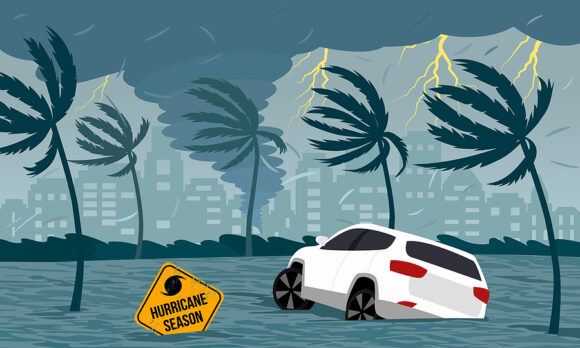Record-breaking Hurricane Beryl is intensifying as it churns through the Caribbean south of Grenada, where it’s forecast to unleash catastrophic winds, life-threatening storm surge and flooding rains.
Beryl regained Category 4 strength after briefly weakening, the US National Hurricane Center said in an advisory at 8 a.m. local time. It was about 70 miles east of Grenada with top winds of 130 miles (209 kilometers) per hour.
The storm rapidly intensified from a tropical depression Friday to a major Category 4 hurricane Sunday night before temporarily losing some power as it spun toward the Windward Islands. Beryl, a looming humanitarian disaster, became the earliest Category 4 storm in the Atlantic, said Alex DaSilva, lead hurricane forecaster at AccuWeather Inc.
“It is exceptionally rare,” DaSilva said. “There has never been a Category 4 anywhere in the Atlantic in the month of June.”
Grenada Prime Minister Dickon Mitchell and St. Vincent and the Grenadines Prime Minister Ralph Gonsalves have both declared emergencies and urged residents to protect themselves as the powerful storm passes Monday.
“This will be a difficult time, it will be a trying time,” Mitchell said. “We implore everyone in the path of this hurricane to take all necessary protective measures.”
Damages on Grenada may reach $600 million, or 50% of the nation’s gross domestic product, said Chuck Watson, a disaster modeler with Enki Research. Across the Caribbean, damages may reach $1 billion.
Typically the first hurricane arrives in the Atlantic by August 11 and the first major storm — Category 3 or stronger on the Saffir-Simpson scale — comes by September 1, the hurricane center said. With three storms already in the books, the season itself is also running ahead of the pace usually seen by August 3, which is in line with pre-season forecasts that called for it to be an active year.
The Atlantic between the Caribbean and Africa is the warmest it has ever been during June and temperatures there are closer to what would be expected in August and September, when hurricane season peaks, DaSilva said.
“That is why we saw such explosive development with that storm,” DaSilva said.
An early start to the storm season portends future disasters, and the hurricane center is already tracking what may be the season’s next storm after Beryl.
After Beryl cuts through the Windward Islands it will enter the central Caribbean, where it’s predicted to remain a hurricane, according to the hurricane center. The Dominican Republic, Haiti and Jamaica, along with Mexico, Belize and Honduras, are all threatened by Beryl as it moves west, the center said. It will likely make landfall in Mexico or Belize Friday.
An area of high pressure raising temperatures into the 90s F (30s C) in New Orleans is likely to keep Beryl away from the US Gulf of Mexico coastline for now.
Meanwhile, Tropical Storm Chris moved inland near Tuxpan, Mexico, in the Bay of Campeche. It will bring heavy rainfall and possibly mudslides in higher terrain.
In addition, trailing Beryl is a potential third storm that is forecast to grow in strength during the coming week. Beryl’s path through the Atlantic will likely rob this storm of warm water, so it probably won’t be as powerful, DaSilva said.
Before the six-month season started June 1, forecasters were already predicting the
Was this article valuable?
Here are more articles you may enjoy.


 Twice Injured Firefighter Loses Second Workers’ Compensation Claim
Twice Injured Firefighter Loses Second Workers’ Compensation Claim  Insurance AI Demo Day Calendar Announced
Insurance AI Demo Day Calendar Announced  Waymo to Update Software Across Fleet After Major Power Failure
Waymo to Update Software Across Fleet After Major Power Failure  Cat Bonds Linked to Wildfires Lose ‘Once Untouchable’ Status
Cat Bonds Linked to Wildfires Lose ‘Once Untouchable’ Status 